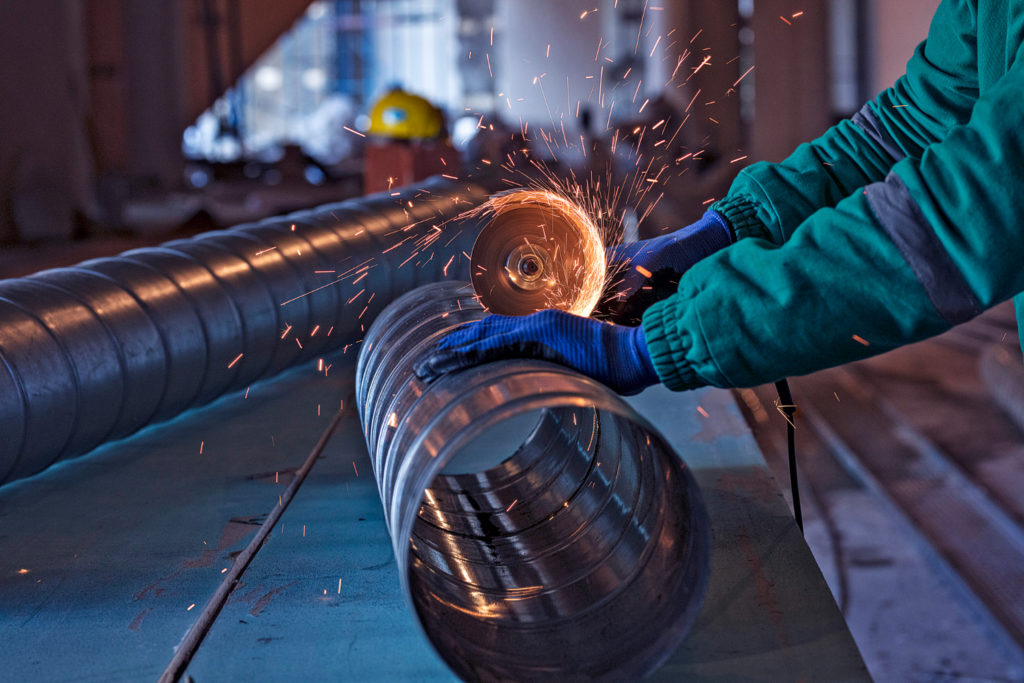
Hydrogen could play a better role in decarbonizing green steel production if the process was better understood. How can we learn more about this? A new study can help understand how hydrogen can impact the decarbonization of the green steel industry.

The complexity of the process, which appears to be simple
Guangwen Zhou, a university professor at Binghampton, has received a grant from the National Science Foundation (NSF) to conduct a study on hydrogen in the production of green steel. To that goal, the National Science Foundation (NSF) awarded the professor a grant.
He claimed that because green steel is just thought to create iron and water, the method of creating it is thought to be straightforward. However, the decarbonization process of green steel production is more complicated due to the dependence on other firm intermediate steps.
Traditionally, foundries produce steel by removing oxygen from iron ore using a carbothermic method that combines iron oxide with carbon and intense heat. As the steel sector works to cut emissions to meet government climate targets, innovative green steel projects have arisen in recent years that employ hydrogen instead of carbon-intensive techniques.
Guangwen Zhou: the pioneer in the study of the decarbonization process in steel production
Metal oxides have been studied for more than a decade by Guangwen Zhou, deputy head of the materials science and engineering program at Binghamton University and director of the Materials Research Institute.
Zhou recently made the decision to collaborate on two large-scale research on oxide reactions in real time with Brookhaven National Laboratory and other assistance.

All players in the process, Zhou and his students will use the equipment available at Brookhaven, which includes the ambient pressure X-ray Photoelectron Spectroscopy (AP-XPS) technique and environmental Transmission Electron Microscopy (TEM), to examine possible approaches to the reduction of iron oxide at high temperatures, above 1,000 degrees Celsius.
Zhou and his colleagues hope to offer a “fundamental understanding of the temporal sequence of the reaction process and its complex transformations” through their study on hydrogen in the context of the steelmaking process. Three variables that can be adjusted are the pressure, temperature, and hydrogen content.
The urgency of decarbonizing the steel industry
Every year, steel is mass-produced. It is estimated to be worth over two billion tons. Despite its extreme importance to the world, the steel industry is responsible for a considerable portion of all greenhouse gas emissions.
The process will be studied due to the need to reduce greenhouse gases, as this is a topic of interest to both the scientific community and society.
Frequently asked questions about sustainability in the steel industry

1. Why is it important to decarbonize the steel industry?
One of the primary industrial sources of carbon dioxide emissions and a major contributor to climate change is the steel sector. Decarbonizing the industry is therefore crucial to achieving global climate goals.
2. What are the sustainable strategies in the steel industry?
Environmentally friendly practices in the steel industry refer to methods and technologies that aim to reduce the carbon footprint of steel production.
3. How does recycling contribute to more sustainable steel production?
When steel is produced using electric arc furnaces instead of iron ore, the amount of energy needed is greatly decreased. In addition, as the steel has already undergone a refining process, a less carbon-intensive refinery is required.
4. What possible effects might sustainable practices have on the steel sector?
Adopting sustainable practices can significantly reduce carbon emissions in the steel industry. In addition, it can increase competitiveness for companies that adopt these practices, given the increase in demand for ‘green steel’ in sectors such as automotive and construction.
5. How is hydrogen being used to decarbonize steel production?
Direct reduction is a technique that turns iron ore into iron by using hydrogen in place of carbon. Instead of producing carbon dioxide as a byproduct, this process produces water. However, it is essential to produce hydrogen using renewable or low-carbon energy sources in order to be considered a sustainable practice.
6. What are some obstacles to making the steel industry more sustainable?
Challenges include the high costs associated with transitioning to new technologies, ensuring a reliable supply of low-carbon energy and dealing with the technical complexities of some decarbonization methods. Political support, research and development, and collaboration across the industry will be crucial to overcoming these challenges.
7. What progress has been made in decarbonizing the steel industry?
Numerous steel corporations have pledged to decrease their carbon footprint, and a few are in the process of introducing sustainable methods. Experimental projects are being conducted to test the use of hydrogen in steel production, and carbon capture and storage technologies are being evaluated in various locations.
8. What role does electrification play in decarbonizing steel production?
Electrification involves the use of electricity, preferably from renewable sources, to power the processes related to steel production. This can include the use of electric arc furnaces to melt steel scrap or electrolysis to produce hydrogen for direct reduction.
9. What is Carbon Capture and Storage (CCS) and how does it apply to the steel industry?
Carbon Capture and Storage (CCS) is a technology that captures carbon dioxide emissions from industrial processes, such as steelmaking, and stores them underground to avoid contributing to climate change. In the steel industry, CCS can be implemented in blast furnaces or during the direct reduction process.
From Hydrogen Fuel News

UH2 is at the forefront of revolutionizing the hydrogen industry, specializing in green hydrogen and ammonia solutions. Because we are dedicated to achieving global decarbonization, we drive the energy transition and make sure all of our plants are operating at maximum capacity. Our 100% green solutions, powered by renewable energy, span the entire value chain—from green power generation to distribution and storage. UH2 is committed to generating value by means of prompt acquisitions in key areas, ongoing technical improvements, and creative problem-solving, ultimately building strong and financially viable value chains. The company operates under strict standards and has a forward-thinking philosophy. Explore our projects and find out more about the significance of hydrogen!
